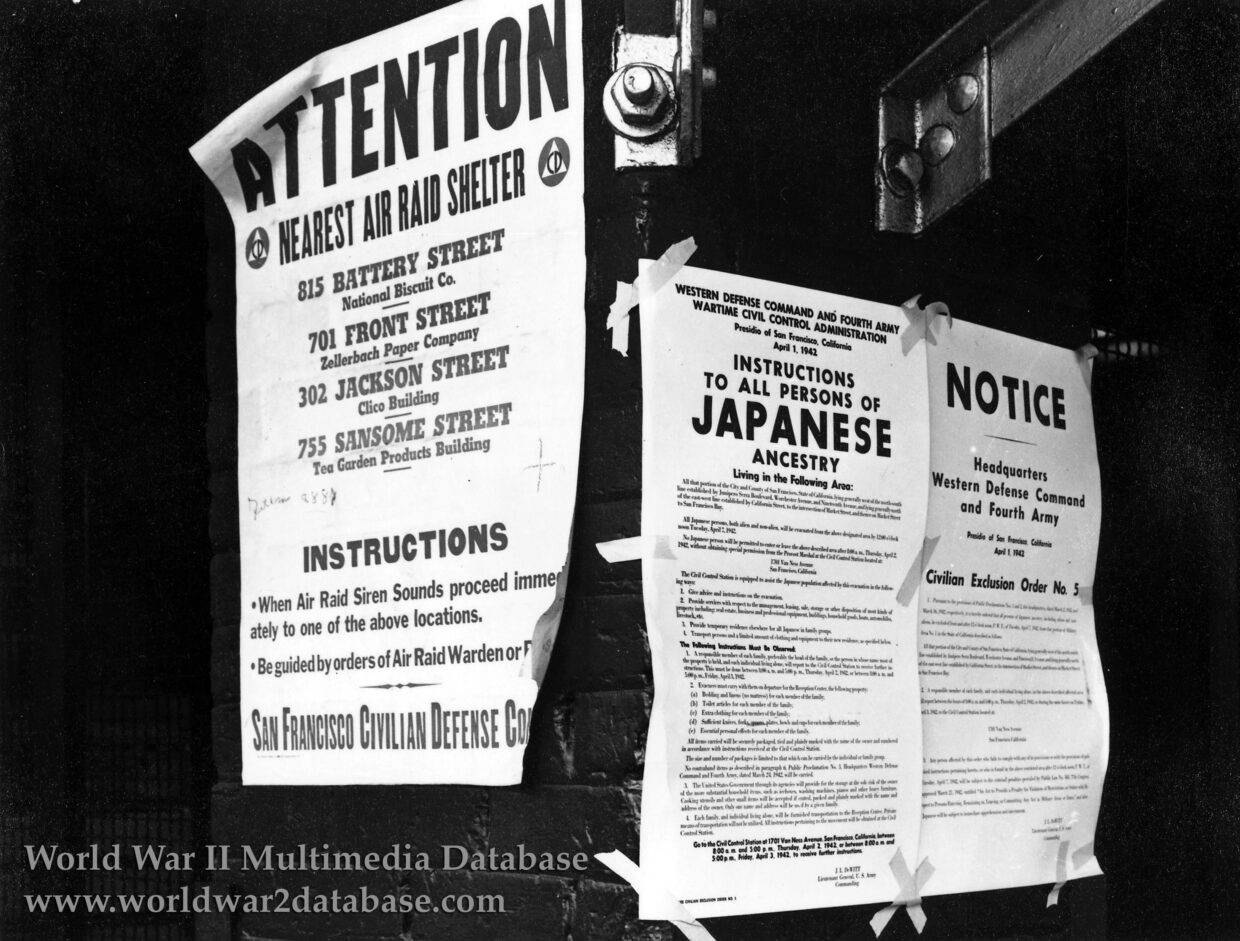| On a brick wall beside air raid shelter poster, exclusion orders were posted at First and Front Streets. United States President Franklin D. Roosevelt concurred with the demands for exclusion being made by vocal critics of the Japanese American community. Support for internment was strong in the Western Defense Command at the Presidio, led by United States Army Lieutenant General John L. DeWitt. On November 7, 1941, Roosevelt had received an independent report written by Curtis B. Munson, a wealthy Chicago businessman who had worked with the State Department. Munson reported that the West Coast Nikkei posed no threat to American security either by sabotage or by espionage. His findings concluded the Nisei were “90-98% loyal to the United States ,“ excluding the Kibei (educated in Japan). DeWitt was not impressed with the Munson Report. In 1923, as a colonel, DeWitt had worked on an army plan to defend Oahu that called for the internment of both alien and citizen Japanese. Nor did he concur with the Justice Department that individual suspects could be located and confined without mass removals. Concluding his report with, “A Jap‘s a Jap,“ the general urged the president to remove all Japanese Americans from the West Coast on the grounds of “military necessity.“ Roosevelt received the Munson Report on November 7, 1941. Nevertheless, on February 19, 1942, he signed Executive Order 9066, entitling the army to designate military areas to which any person could be denied access. Roosevelt was following the recommendations of Secretary of War Henry L. Stimson and Assistant Secretary John J. McCloy. Only the Quakers and a few individuals spoke out against the internment. Executive Order 9066 was clearly aimed at the Japanese Americans, who were not mentioned by name. On March 2, DeWitt issued Public Proclamation No. 1, which divided the West Coast and Arizona into two large military areas, where persons of “Japanese ancestry“ would be excluded. DeWitt designated San Francisco as the first area to be evacuated on April 1. A Civil Control Station was opened at 1701 Van Ness Avenue, and General DeWitt directed that a responsible member of each family, and each individual living alone, report there by April 3. Evacuations began by bus and by train and were ordered to by completed by April 7. | |
| Image Filename | wwii1155.jpg |
| Image Size | 1.46 MB |
| Image Dimensions | 2937 x 2229 |
| Photographer | Lange, Dorothea |
| Photographer Title | |
| Caption Author | Jason McDonald |
| Date Photographed | April 11, 1942 |
| Location | Exclusion Order Posted at First and Front Streets |
| City | San Francisco |
| State or Province | California |
| Country | United States |
| Archive | National Archives and Records Administration |
| Record Number | |
| Status | Caption ©2007, ©2024 MFA Productions LLC Image in the Public Domain |

Author of the World War II Multimedia Database

